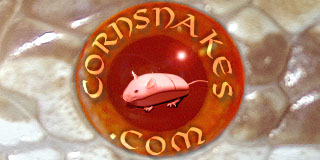Do you know if it has any hets?
All the information I'm going to give you will assume that your snake has no hets. If it happens to have any hets results could be different.
A rule of thumb that works for *most* morphs is that for a certain morph to visibly show in an offspring (i.e. homozygous recessive for a morph), then BOTH parents need to have at least one recessive allele of that particular trait. (So mother and father need to be either homozygous recessive, that is visibly showing the trait, or heterozygous for the trait you want).
If I use the letter A to represent an amel allele then:
AA = homozygous dominant = normal/wildtype = no recessive allele
Aa = heterozygous = normal = 1 recessive allele
aa = homozygous recessive = amel = 2 recessive alleles (most morphs need 2 recessive alleles to be expressed).
For every trait, an offspring will take 1 allele from the mother and 1 from the father. And since you generally need 2 recessive alleles for a morph to be visibly expressed, that means both the mother and father need to have at least 1 recessive allele (i.e. they either need to be heterozygous (het) or homozygous recessive).
Your snow is homozygous recessive for anery and homozygous recessive for amel. I do not know if it has any hets, so for now I'm just going to assume that it does not have any hets. This means that in the first generation of offspring, the only possible visibly expressed traits you will be able to get in the offspring are anery, amel, and anery-amel (snow).
Take into note that this doesn't count the few traits that do not work completely recessively. Like tessera. Also, the ultra gene is on the same locus as amel and so works slightly differently, so you could get a slightly different result if you breed your snow to ultra/ultramel...which if you are looking for something different in the first generation is probably your best bet.
snow x ultramel het anery = amels, ultramels, snows, ultramelaners (ultramel anery)
snow x ultramelaner = snows, ultramelaner
snow x ultra het anery = ultramel and ultramelaner
etc...
If you don't want to use ultra/ultramel
snow x snow = snow
snow x anery = anery
snow x amel = amel
snow x anery het amel = anery, snow
snow x amel het anery = amel, snow
snow x normal het amel anery = normal, anery, amel, snow
snow x (caramel or lavender or lava or stripe or etc....) = all normals (unless your snow happens to be het for any of those)
Now, if you want to do a project, you could breed your snow to whatever morph(s) you would like to include in your project. Then you breed the first generation back to eachother and in the 2nd generation you will get your morphs to appear.
Lets say you want to include stripe into your snows...
snow x snow stripe = f1 generation = 100% snow het stripe
snow het stripe x snow het stripe = f2 generation = snows, snow stripe
If you want to add lavender
snow x lavender = f1 generation = 100% normals het lavender, amel, anery
normal het lavender, amel, anery x same = f2 generation = normals, amels, lavenders, anery, opal, anery lavender, snow, lavender snow.
You could add more than one morph, whatever you want, to attempt to create whatever you want.
I don't know if I'd add hypo to the mix, because hypo can be hard to distinguish when it is visible in conjunction with amel, but that's just what I'd do. Though you could, if you wanted to, like in the lavender example just above you could breed it to a hypo lavender instead, and in the f2 generation you will also get some ghosts and hypo lav and ghost lav, but then when it is with the amel morphs it might be hard to distinguish.
I'd play around with a corn calculator
www.corncalc.com
